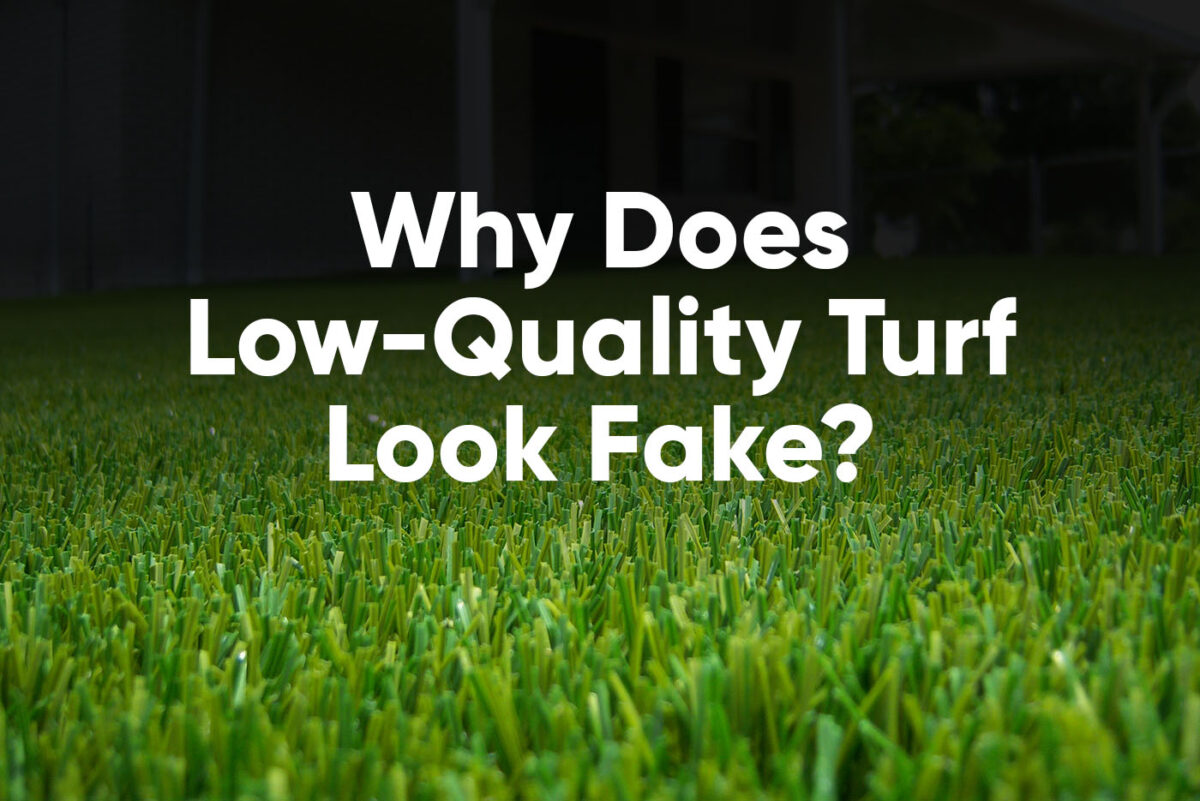- BACKYARD
- COMMERCIAL
- ENVIRONMENT
- FIELD TURF NEWS
- GOLF
- MAINTENANCE
- NEWS
- PETS
- POOL
- RESIDENTIAL
- TURF TIPS
Why Poor-Quality Artificial Grass Looks Fake

Here at FieldTurf, we’ve spent years obsessing over what makes real grass look good – how the blades catch the light, the mix of textures, the little inconsistencies. We try hard to replicate those organic details in our artificial grass products, which you can see for yourself when you take a virtual tour of our Calhoun plant.
Without those details, it’s difficult to create residential artificial turf that looks remotely close to the real thing. We recently discussed how to spot low-quality turf, and today, we want to dive deeper into why such products look so fake in the first place.
Lack of Different Blade Types
First, the lack of different blade types is a dead giveaway. Real lawns have multiple grass species filling things in. Some thin and wiry, others short and stubby, a few tall and leafy.
On the other hand, low-grade blades tend to be shiny and flat, lacking the soft, rounded edges of real grass that scatter light in a natural way. They are often wider and shorter than true blades, giving the texture a uniform, rug-like appearance rather than a varied landscape.
And you won’t find any of the wispy, fine blades that blend and fill areas in between thicker grasses. Similarly, all the blades stand exactly and unnaturally erect at the same height, rather than displaying subtle variations as in nature.
Lack of Color Variation
Then there’s color variation – or lack thereof. Real greenery has all sorts of yellowing, browning, fading going on that catches light uniquely. You won’t find this in poor-quality turf, which are often just one uniform bright green all over.
Sparse Turf Density
When it comes to residential artificial grass, the more blades in a given area, the fuller and more lifelike your turf will be. Shorter fiber heights mixed in with slightly taller blades also better recreate a natural, healthy grass appearance.
Low quality artificial turf tends to be sparsely filled for a few key reasons. Cheaper manufacturing processes often skimp on materials to save money, resulting in fewer blades woven into the backing. This leaves more spacing between the blades. Additionally, these frequently use wider blades to give the impression of fullness while reducing costs. Wider blades mean less can fit in a square inch.
Backing Visibility Issues
You can frequently see the plastic backing material between widely spaced blades on low-grade residential turf grass. Again, that’s because the turf is often not dense enough to conceal the base layers. When you can see the artificial backing, it immediately looks fake instead of resembling an actual lush lawn.
Get In Touch for Recommendations
If you have additional questions about this subject, please contact us directly. We’re glad to detail the quality, technology, materials, and warranties standing behind FieldTurf Landscape products.
We can also connect you with certified local FieldTurf dealers for design consultations, quotes, and guidance tailored to your project.
Get started by calling us at 866-352-4575 or send us a message today.


